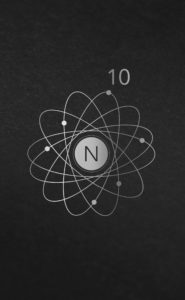Thank You for Ten Years of NANO Fiction
 When NANO Fiction began in 2006, the editors were a handful of students wanting to create a space for short stories. There were the lit journals we looked up to, the powerhouses of flash fiction: elimae, Quick Fiction, SmokeLong. We hoped to create a space in print like these, a space where the shortest stories could find a home, where they could tear a reader apart with their sharp little teeth, where they could saturate the page without filling the page. Much like the era, the work we wanted to publish was concerned with economics, with time, with space.
When NANO Fiction began in 2006, the editors were a handful of students wanting to create a space for short stories. There were the lit journals we looked up to, the powerhouses of flash fiction: elimae, Quick Fiction, SmokeLong. We hoped to create a space in print like these, a space where the shortest stories could find a home, where they could tear a reader apart with their sharp little teeth, where they could saturate the page without filling the page. Much like the era, the work we wanted to publish was concerned with economics, with time, with space.
NANO Fiction came about at a moment when print had just been declared dead, where everyone was succumbing to the recession—universities were stripping long-running publications of their funding, subscribers were tightening their belts, and nonprofits were flailing under the Bush-era gutting of their endowments. But there was something about the flash fiction form that could not be pinned down by all of this. NANO Fiction was flexible. The stories took a form not easily boxed-in by the rigid constraints of genre, and in return the magazine was a reflection of this litheness. The recession opened a door where flash fiction could thrive in print, and we are so proud that NANO Fiction helped in that process.
I mention all of this because, as the founding editor of the journal, I was always deeply aware that the economics of the publication were important. I loved the stories, but it was the business of the magazine that needed the most attention, and it was the business of the magazine that I took the most pride in. Ten years ago, NANO Fiction was concerned with creating print outlet for flash, and it was my duty to find a way to financially do that, but over time the magazine became more than that—it became an educational tool, a resource for writers and teachers, a trigger for conversations, and a balm. NANO Fiction was where new writers could experiment with short forms; writer-educators could find teaching materials and essays for their classes in our State of Flash Series; readers could find the latest and greatest collections through our reviews; and those with writer’s block could cure their ailment with our writing prompts both online and in our We Like It Fast handbook. It has been an incredible decade, one in which NANO Fiction has transcended even our own expectations. The journal and the community it fosters have changed dramatically.
As our staff has surveyed those changes, we’ve thought deeply about the next steps. And in doing so, we’ve come to see that the conditions that led to NANO Fiction’s creation have changed, too. Flash has gained traction as a literary form, and now many publications routinely include it in their pages. Print is, in fact, still around, despite the early elegies of the aughts. And the literary magazine scene is vibrant and lively. We’re so honored to be part of that scene, and we hope the work we’ve done has helped enrich it. We’re proud of that work.
In some sense, of course, the work of advocating for underappreciated forms and creating a space for diverse voices will never be complete. But in a practical, economic, logistic sense, we do feel that NANO Fiction’s tenth anniversary is the time for us to end our journey. Therefore, this will be the journal’s final issue. As part of our transition and educational mission, we’re making all our archive available, on a rolling basis, online starting January 1st, 2017. We hope you’ll enjoy reading and rereading these works as much as we have.
We’re so grateful for the writers who shared their work with us and the readers who came to our pages. Thank you for being part of this lovely decade.
Click here to purchase the last issue // & here for more information on your subscription.
Thank you,
Kirby Johnson
Founding Editor
